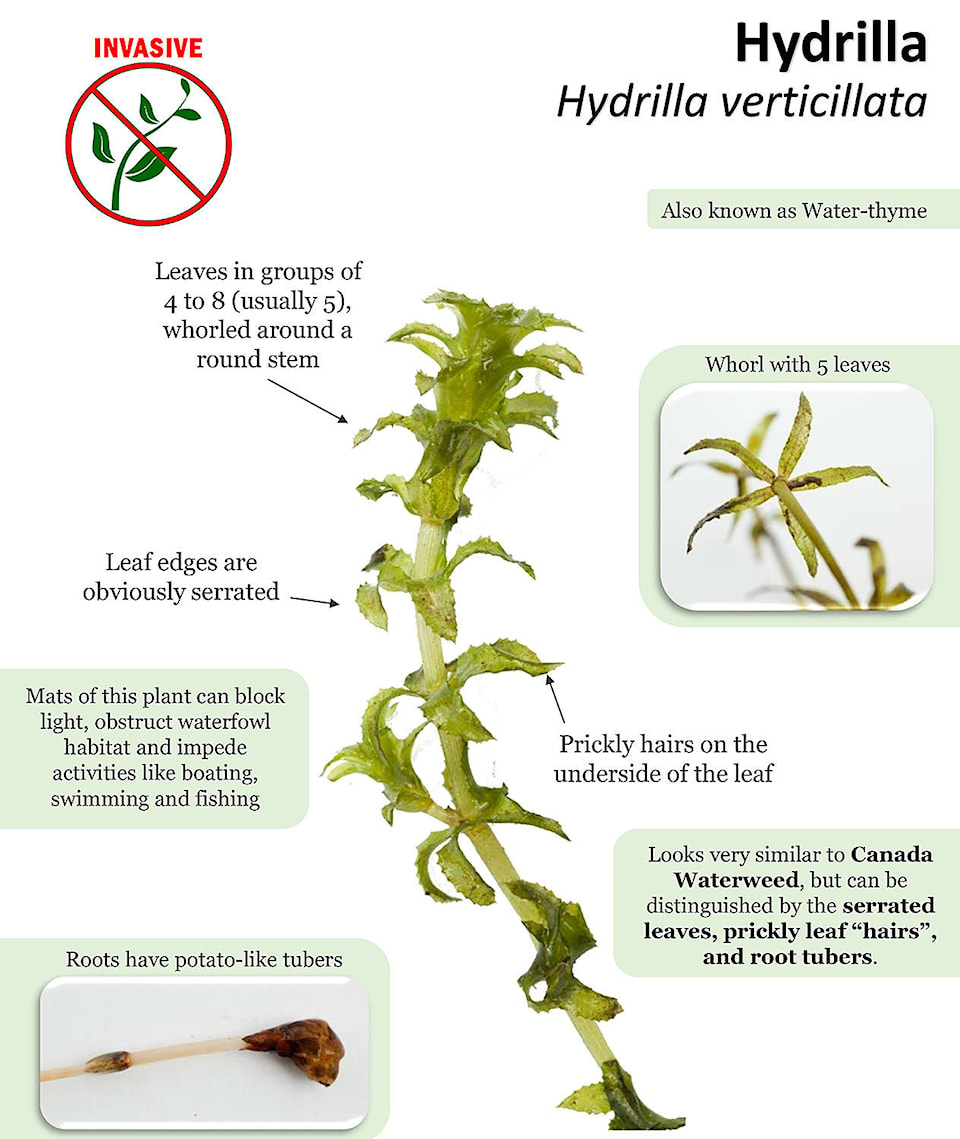Quite often, the discussion around water focuses on the quality, but there is an enemy out there that can be of great concern when it comes to a sustainable eco-system.
As part of World Water Day on March 22, the Battle River Watershed Alliance hosted an information evening at the Ponoka Royal Canadian Legion that included a talk regarding invasive water plants and how important it is to distinguish them from those that are native and helpful.
Brad Peter, executive director of the Alberta Lake Management Society (ALMS), spoke to the crowd of around 30 about what his organization does as well as on invasive aquatic plants — some of which have found a foothold in the province.
ALMS performs water quality monitoring, on contract, with a number of volunteers providing both their labour and boats and Peter explained it was simply a natural progression for the group to get in on watching for invasive plants.
“We do water quality monitoring over time and track the health of those water bodies. We found that while there was talk out there about invasive plants in the water, no one was doing any work or data collection,” he said.
“It really wasn’t a topic that was on people’s minds, with many just figuring it was seaweed or it didn’t matter because you can’t really see it. So, we began doing this plant monitoring back in 2014.”
Peter noted there are about 2,200 named lakes in the province, but just 800 fish-bearing lakes, as opposed to the 100,000 that hold fish in Saskatchewan.
“That means there is a lot of pressure — from fishing and development — on our lakes,” he added.
Because of that added pressure, it’s even more important to keep invasive plants out of the water system stated Peter.
There are four types of invasive aquatic plants Peter explained ALMS were primarily looking for — Eurasian Milfoil, Flowering Rush, Curly Leaf Pondweed and Hydrilla.
“We were looking primarily for these due to the fact these plants are most commonly found in a number of the nearby jurisdictions as well as one already having some establishment in the province,” he said.
“Among the issues that these plants can cause are troubles with the in and out flows of water, specifically when it comes to pipes, a reduction in bio-diversity as well as light penetration, no one likes boating through a growth of plants or taking them off the motor constantly and they can out-compete the native species plus eat up the majority of oxygen in the water when it dies off causing problems for fish and other animals.”
Another reason for doing the invasive plant collection was to develop a field guide to help identify both native and invasive plants.
“It can be difficult and tricky to distinguish between native and invasive plants, considering they can look extremely similar,” Peter said.
“For example, looking at the invasive eurasian milfoil and the native northern milfoil, it’s easy to mis-identify them. For this specific species, you have to look at the number of leaflet pairs in order to tell them apart.”
The field guide is available through a free download on the ALMS website (www.alms.ca) and looking under ‘Programs’ for invasive plants. There is also an app available called EDDMaps (www.eddmaps.org) that can help locate and track invasive plant species occurrences plus allow users to record their observations.

